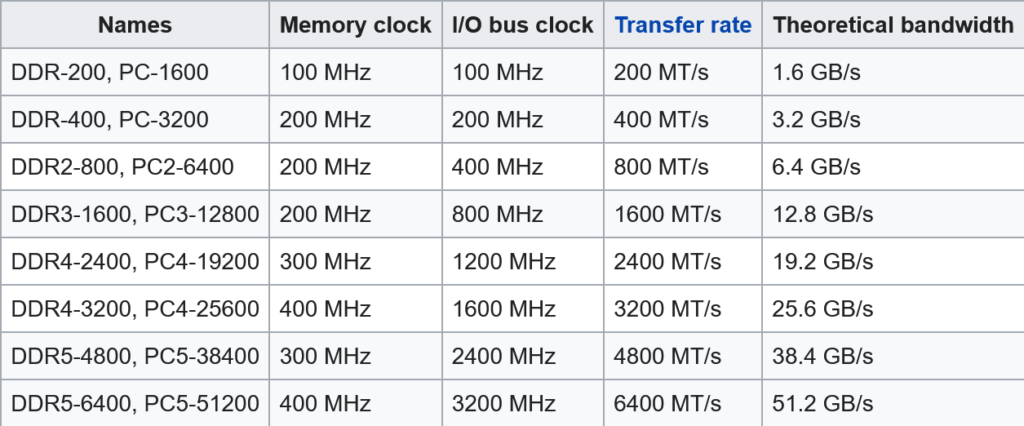It’s been 4 years since DDR4 is a standard RAM for PC and Laptop. The new generation that is call “DDR5” is built at 2019 and official launched at November 2021. DDR5 is not only fast than before generation, but there is a feature that make different between the old generation.
In this moment, we will be introduced to DDR5 RAM, but do you know what the difference between DDR4 and DDR5 RAM is? Well, for those who are still curious
There is details about DDR5 feature:
Voltage


As you may have notice, as RAM grows, the voltage required keeps dropping. In essence, RAM that use to consume a lot of power is now more energy-efficient. Thanks to newer and more developed technologies.
For those who don’t know, to operate in normal mode, DDR3 require 1.5V voltage, DDR4 1.2V, and DDR5 only require 1.1V. This is regardless of the voltage need when the user is overclocking the voltage require will certainly very greatly.
Frequency
The underlying difference between DDR4 and DDR5 RAM is of course none other than frequency. For comparison, the initial frequency of DDR3 is 1066MHz, and the starting frequency of DDR4 is 2133MHz. You can check the double amount, even on the old generation of RAM.
However, the resulting frequency in the first batch of DDR5 RAM was 4800MHz, and not 4266MHz. The 2.25x increase in performance indicates a very good improvement to increase the quality of RAM in the future.
Maximum Capacity
Another difference that is quite interesting to note lies in the RAM capacity. As you may already know, the maximum capacity on a single RAM chip on DDR4 is limit to only 32GB. In addition, the maximum memory capacity for the DDR4 platform is only limited to 128GB.
DDR5 breaks all these limitations and offers a maximum capacity of 128GB for just one RAM chip. In addition, the maximum memory capacity for the DDR4 platform is increase by 4 times, which is up to 512GB.
When you look at the previous DDR development, the maximum capacity of DDR5 is also very much in line with the previous standard, bro. The fact is that each generation of RAM offers a capacity limit of 4 times that of the previous generation.
Power Management
DDR5 uses power management that is managed directly through the RAM, and not the motherboard. The reason for moving this power management to RAM seems to be because the required voltage is 1.1V, so the signal tolerance is very small.
This power management shift is an excellent solution, so it can control RAM power directly. In addition, of course, it can improve the efficiency of signal integrity and overall noise identification capabilities.
Built in ECC
Error-Correcting Code (ECC) is a technology for error correction and is very commonly used on server computers. The presence of the ECC feature in DDR5 memory will certainly make the memory more stable, and minimize errors that may occur. DDR5 enhances this feature by adding its own ECC debugging function.
The presence of ECC certainly makes a fairly prominent difference between DDR4 and DDR5 in general. However, based on the information currently available, it is still uncertain whether DDR5 will implement its own ECC as a standard. Launching from the Team group blog post, ECC has been embedded in all of their memory modules.
More About Technology







